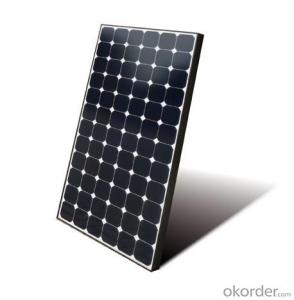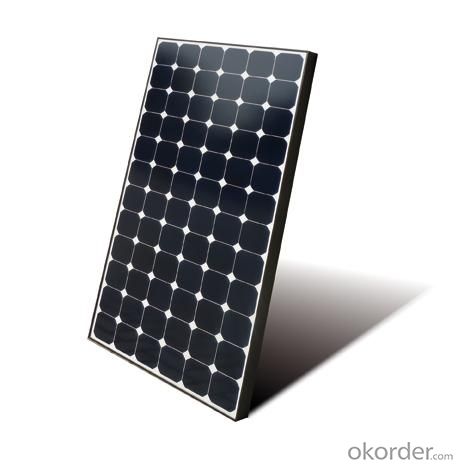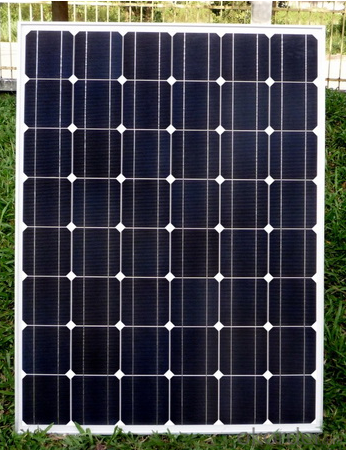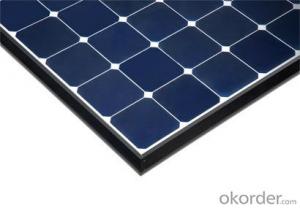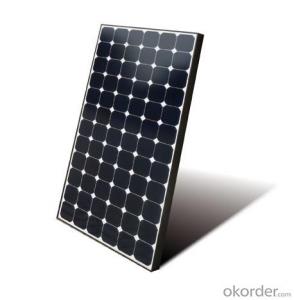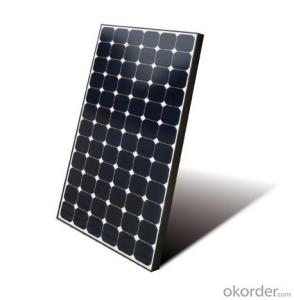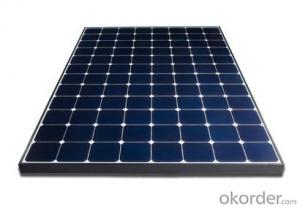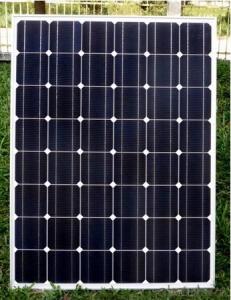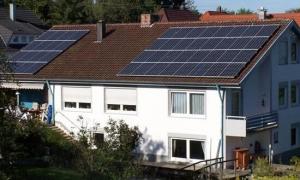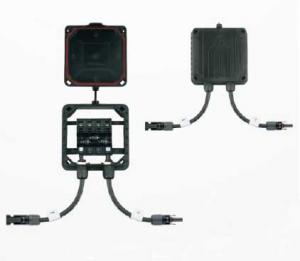Solar Energy Systems Dealers - CNBM On Grid System 15KW with Certificate UL TUV CE
- Loading Port:
- Shanghai
- Payment Terms:
- TT OR LC
- Min Order Qty:
- 100 watt
- Supply Capability:
- 1000 watt/month
OKorder Service Pledge
OKorder Financial Service
You Might Also Like
Specification
CNBM On Grid System 10KW with Certificate UL TUV CE
Product description
They range from small residential and commercial rooftop systems to large utility-scale solar power stations. Unlike stand-alone power systems, a grid-connected system rarely includes an integrated battery solution, as they are still very expensive. When conditions are right, the grid-connected PV system supplies the excess power, beyond consumption by the connected load, to the utility grid.
Connection of the photovoltaic power system can be done only through an interconnection agreement between the consumer and the utility company. The agreement details the various safety standards to be followed during the connection.[4]
Bypass diodes may be incorporated or used externally, in case of partial module shading, to maximize the output of module sections still illuminated.
Grid-connected PV systems are comparatively easier to install as they do not require a battery system.[1][6]
Grid interconnection of photovoltaic (PV) power generation systems has the advantage of effective utilization of generated power because there are no storage losses involved.[7]
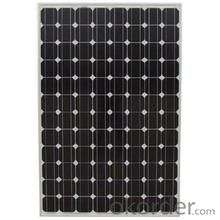
Application
Industrial
Commercial
Residential
Feature
Residential, grid-connected rooftop systems which have a capacity more than 10 kilowatts can meet the load of most consumers.[2] They can feed excess power to the grid where it is consumed by other users. The feedback is done through a meter to monitor power transferred. Photovoltaic wattage may be less than average consumption, in which case the consumer will continue to purchase grid energy, but a lesser amount than previously. If photovoltaic wattage substantially exceeds average consumption, the energy produced by the panels will be much in excess of the demand. In this case, the excess power can yield revenue by selling it to the grid. Depending on their agreement with their local grid energy company, the consumer only needs to pay the cost of electricity consumed less the value of electricity generated. This will be a negative number if more electricity is generated than consumed.[3] Additionally, in some cases, cash incentives are paid from the grid operator to the consumer.
Packaging
With carton and box
- Q: Can solar energy systems be used in indoor farming or greenhouse applications?
- Yes, solar energy systems can be used in indoor farming or greenhouse applications. Solar panels can be installed on the roofs or walls of greenhouses to capture sunlight and convert it into electricity, which can power various aspects of indoor farming operations such as lighting, irrigation systems, and ventilation. This not only reduces the reliance on traditional energy sources but also provides a sustainable and cost-effective solution for indoor farming.
- Q: What is the system voltage of solar panels
- Solar panels (Solar panel) is composed of one or more solar cells to form a solar panel. A solar cell is a semiconductor device that converts light into electrical properties, which can convert solar radiation energy on its surface into direct current
- Q: What are the advantages and disadvantages of small-scale solar power generation system?
- Solar power has no moving parts, is not easy to damage, simple maintenance, especially suitable for unattended use; solar power will not produce any waste, no pollution, noise pollution, no adverse effects on the environment, is the ideal clean energy; solar power system short construction period, convenient and flexible, and can according to the load or, add or reduce photovoltaic capacity, avoid waste.
- Q: Are there any limitations to the amount of electricity a solar energy system can generate?
- Yes, there are limitations to the amount of electricity a solar energy system can generate. The primary limitation is the availability of sunlight. Solar panels require direct sunlight to generate electricity, so factors such as weather conditions, geographical location, and time of day can affect the amount of sunlight received. Cloudy or rainy days can significantly reduce the electricity output of a solar energy system. Another limitation is the physical space available for installing solar panels. The size and number of panels that can be installed depend on the available roof or ground space. Limited space can restrict the overall capacity of the system and, consequently, the amount of electricity it can generate. Additionally, the efficiency of solar panels is a determining factor. The efficiency of converting sunlight into electricity varies depending on the type and quality of solar panels used. Higher efficiency panels can generate more electricity than lower efficiency ones. Furthermore, solar energy systems are also subject to degradation over time. Solar panels experience a gradual decrease in efficiency as they age due to factors like exposure to sunlight, temperature fluctuations, and environmental conditions. This degradation can reduce the overall electricity generation capacity of the system. Finally, energy storage is a limitation. Solar energy systems generate electricity during the day, but the demand for electricity often remains constant throughout the day and night. Without an efficient energy storage system, excess electricity generated during the day is wasted if not used immediately. Therefore, the inability to store excess electricity limits the overall amount that can be generated by a solar energy system. In summary, while solar energy systems offer a sustainable and renewable source of electricity, there are limitations to the amount they can generate due to factors such as sunlight availability, physical space, panel efficiency, system degradation, and energy storage capabilities.
- Q: What are the components of the solar photovoltaic system?
- Frame: aluminum alloy frame with high strength, strong resistance to mechanical impact. Is also the most valuable part of home solar power. A device for converting direct current into alternating current. Since the solar cells and batteries are DC power, while the load is AC load, the inverter is essential. The inverter can be divided into independent operation inverter and grid connected inverter. The independent operation of the inverter is used for the independent operation of the solar cell power generation system, for independent load power supply. Grid connected photovoltaic power generation system for grid connected operation. The inverter can be divided into square wave inverter and sine wave inverter according to the output wave type. The square wave inverter has the advantages of simple circuit, low cost, large harmonic component, and the utility model can be used for a system with a few hundred watts and a low harmonic requirement. Sine wave inverter is expensive, but can be applied to various loads.
- Q: Can a solar energy system be used in areas with high levels of air pollution?
- Yes, a solar energy system can be used in areas with high levels of air pollution. While air pollution can reduce the efficiency of solar panels, it does not completely hinder their ability to generate electricity. Solar energy systems still function and produce power even in polluted areas. However, it is important to note that the efficiency of the system may be slightly reduced due to the reduced amount of sunlight reaching the panels. Regular cleaning and maintenance of the solar panels can help mitigate the impact of air pollution on their performance. Additionally, advancements in solar technology are being made to improve the efficiency of panels in polluted environments, such as the development of anti-soiling coatings that prevent dust and pollutants from sticking to the panels. Overall, even in areas with high levels of air pollution, solar energy systems can still be a viable and sustainable source of electricity.
- Q: Can a solar energy system be installed on a ground mount?
- Indeed, it is possible to install a solar energy system on a ground mount. In reality, ground-mounted solar systems are highly popular and offer numerous advantages compared to roof-mounted systems. Ground-mounted systems typically have a larger size and can accommodate a greater number of solar panels, resulting in increased energy production. They can also be positioned at the ideal angle and orientation to maximize sunlight exposure, which may not always be achievable on a roof. Furthermore, ground-mounted systems are more easily accessible for maintenance and cleaning since they are not situated on the roof. Therefore, if there is ample space available on your property, opting for a ground-mounted solar energy system can be an exceptional choice for generating clean and renewable energy.
- Q: What is the impact of roof material on the performance of solar panels?
- The impact of roof material on the performance of solar panels can vary. Certain roof materials, like metal or concrete, can enhance the performance of solar panels by reflecting sunlight onto the panels, thereby increasing their efficiency. On the other hand, materials like clay tiles or slate can create shading or uneven surfaces, which can reduce the overall output of solar panels. Additionally, roof materials with high heat absorption, such as asphalt shingles, may cause the panels to overheat, leading to decreased efficiency. Therefore, the choice of roof material plays a crucial role in determining the effectiveness of solar panels.
- Q: What is the maintenance cost of a solar energy system?
- The maintenance cost of a solar energy system can vary depending on several factors such as the size of the system, the type of components used, and the location of the installation. Generally, solar energy systems have minimal maintenance requirements and are considered to be low maintenance compared to other forms of energy generation. Regular maintenance tasks for a solar energy system may include cleaning the solar panels to ensure optimal performance, inspecting the wiring and connections for any damage or loose connections, and checking the inverter for proper functioning. These routine maintenance activities can typically be performed by the system owner or a professional technician. In terms of cost, the maintenance expenses for a solar energy system are typically quite low. The cleaning of solar panels can usually be done with basic equipment and materials, and the frequency of cleaning may vary depending on the level of dust or dirt accumulation in the area. Any necessary repairs or replacements of components may incur additional costs, but these instances are relatively rare, especially with high-quality solar systems. It is important to note that many solar energy system manufacturers offer warranties that cover the cost of repairs or replacements for a specified period. Additionally, some solar energy system owners choose to invest in service contracts or maintenance plans to ensure regular inspections and upkeep of their systems. Overall, while there are some maintenance requirements associated with a solar energy system, the costs are generally low in comparison to the long-term benefits and savings provided by the system's clean and renewable energy generation.
- Q: What is the impact of hail on solar panels?
- Hail can have a detrimental impact on solar panels, as the forceful impact of hailstones can cause physical damage to the panels. This damage can result in cracks or fractures in the glass or photovoltaic cells, reducing the efficiency and effectiveness of the panels. Furthermore, hail can also impair the electrical connections within the solar panel system, leading to malfunction or complete failure. Therefore, it is important to consider protective measures, such as installing hail guards or utilizing insurance policies, to mitigate the potential damage caused by hail on solar panels.
Send your message to us
Solar Energy Systems Dealers - CNBM On Grid System 15KW with Certificate UL TUV CE
- Loading Port:
- Shanghai
- Payment Terms:
- TT OR LC
- Min Order Qty:
- 100 watt
- Supply Capability:
- 1000 watt/month
OKorder Service Pledge
OKorder Financial Service
Similar products
Hot products
Hot Searches
Related keywords
